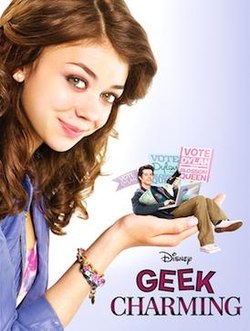In researching class barriers in romance we chose these movies because, for us, they were memorable. They were the movies we grew up with, and they shaped our understanding of romance both as a genre and as an aspect of our real lives. We weren’t sure what we’d find, and we sure as heck not thinking about why these movies existed when they did.
Our story starts, ironically, in the 1920’s–an era where eventual “great American novelist,” F. Scott. Fitzgerald would write one of American Literature’s best known tragic romances about two people dealing with the ever growing barrier of wealth: The Great Gatsby. Whether or not you like the book, or agree that Gatsby and Daisy’s story line in the book is actually a romance, Fitzgerald’s story was invariably connected to the wealth disbursement of his time. The poor were poor, but the rich were super rich.
The Great Depression came, creating a new wave of great American novels for 21st century teens to complain about reading, and with it came regulations to build up the middle class and slow the growth of monopolies.
And then WWII happened.
After WWII the american family went through an economic boom, as a result of the G.I. bill providing millions of veterans with college education and job training as well as subsidies allowing veterans to become homeowners, newly built interstates connecting the suburbs to the cities, and increasingly available credit. All the protections for the poor created in the Great Depression and the returning work force from WWII culminated in creating a strong American middle class which continued to build in the coming decades.
And now we finally get to the 80’s. According to a 1991 Washington Post article, “Economists now report that the boom years of the 1980s were a bust for fully half of all Americans. At the same time, the safety net of social programs for the nation’s poor was replaced by a safety net for the rich, speeding the decline of the middle class” (Morin). Like the 1920’s the rich were getting richer and the middle class was loosing ground once again. And it was already a visible problem in the 1990’s. According to the same article: “These trends are already influencing the politics of the 1990s. From Pennsylvania to Louisiana, and from Capitol Hill to the White House, politicians have suddenly discovered the plight of the increasingly beleaguered middle class” (Morin).
After years of a system working for the middle class and seemingly equal economic prosperity for all–culminating in the rise of mass-media–Americans were aware that the super rich were coming back. So it’s no wonder that media in the 90’s was interested in class barriers again. Gone were the days of social classes staggering the richest classes into tiers of status, and of princes and castles. Now the classes were income brackets and you couldn’t see it in the family name. It had to be shown through clothes and cars and other consumerist objects. The princes were executives and their castles were ultra-modern houses and apartments (which granted isn’t quite as sexy).
This is not to say that the makers of these movies wanted to make an ultra-political statement about the growing wealth of the super rich. No, this is still mass-produced consumerism and romance is still a “trashy genre for women.” But the population was interested in wealth and status again because it was coming back, and that meant it was profitable to make movies about it.
Works Cited:
Morin, Richard. “AMERICA’S MIDDLE-CLASS MELTDOWN.” Washington Post, 1 Dec. 1991, https://www.washingtonpost.com/archive/opinions/1991/12/01/americas-middle-class-meltdown/5ed5f8b6-d9ac-4282-b3d8-166cf2c1e80a/?utm_term=.9f916d70597c. Accessed 1 Dec. 2018.
Roth, Mark. “The historic roots of the middle class.” Pittsburgh Post-Gazette, 20 Nov. 2011, https://www.post-gazette.com/local/region/2011/11/20/The-historic-roots-of-the-middle-class/stories/201111200308. Accessed 1 Dec. 2018.
“The American Middle Class Is Losing Ground” Pew Research Center, 9 Dec. 2015, http://www.pewsocialtrends.org/2015/12/09/the-american-middle-class-is-losing-ground/. Accessed 1 Dec. 2018.


 Synopsis
Synopsis Synopsis
Synopsis